Your search for "" was found in or is associated with the following lessons!
Results are listed alphabetically.
This educational game is a way for students to review key words or concepts from a unit and make connections between them. Students deepen their comprehension by describing concepts in as much detail as possible to another classmate. By making this learning strategy into a game, students are excited and…
100 Squares is a class-wide motivation system that is a combination of tic-tac-toe and bingo. A board of 100 squares, each one numbered, is used as a game board. As the class exhibits positive behaviors, they draw a number and fill in the chart one square at a time. When…
This strategy provides a structure for students to record their own comprehension and summarize their learning. It also gives teachers the opportunity to identify areas that need re-teaching, as well as areas of student interest.
This summarizing technique is a quick and useful tool to assess students’ background knowledge or their level of understanding. Asking students to determine the most important concepts, facts and points is a valuable skill. Intermediate students can use their responses as a note taking device and the teacher can quickly…
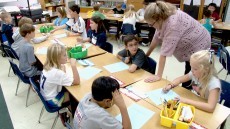 This brainstorming activity encourages students to come up with a variety of words related to a particular topic. Students organize their words in an alphabetical format, writing the word in the relevant box of the chart according to the first letter of the word. Students should be able to explain…
This brainstorming activity encourages students to come up with a variety of words related to a particular topic. Students organize their words in an alphabetical format, writing the word in the relevant box of the chart according to the first letter of the word. Students should be able to explain…
Accountable discussion empowers students to draw up arguments based on evidence. Students learn how to respect the views of their peers while strengthening their communication skills. They get practice in being good conversationalists, participating in conversations in a polite manner.
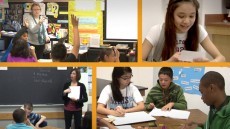 Classroom affirmations are used to create a positive and supportive environment by teaching students to be supportive of one another. Affirmations develop an atmosphere where it is the norm to acknowledge and affirm positive behaviors, thoughts and actions. Used consistently, affirmations can change students’ attitudes and their actions.
Classroom affirmations are used to create a positive and supportive environment by teaching students to be supportive of one another. Affirmations develop an atmosphere where it is the norm to acknowledge and affirm positive behaviors, thoughts and actions. Used consistently, affirmations can change students’ attitudes and their actions.
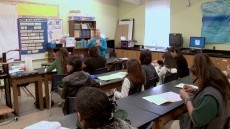 This comprehension strategy activates students' prior knowledge, builds curiosity about a new topic before learning about it, and then checks for understanding after the topic is presented. Before beginning the lesson, students listen to or read several statements about key concepts within the new content and choose whether they agree…
This comprehension strategy activates students' prior knowledge, builds curiosity about a new topic before learning about it, and then checks for understanding after the topic is presented. Before beginning the lesson, students listen to or read several statements about key concepts within the new content and choose whether they agree…
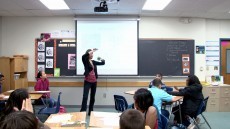 This classroom management tool is a signal that teachers use to obtain students’ attention. The Attention Signal allows the teacher to transition from an interactive activity into an activity that requires attention to be focused on the speaker. The Attention Signal includes both verbal and physical components so it can…
This classroom management tool is a signal that teachers use to obtain students’ attention. The Attention Signal allows the teacher to transition from an interactive activity into an activity that requires attention to be focused on the speaker. The Attention Signal includes both verbal and physical components so it can…
This technique allows students to explain a concept or idea and share thoughts with a partner. Students not only explain their understanding of the concept, but are able to listen to a classmate’s explanation and check it for accuracy. In this way, students are able to help each other correct…
This tool, which is a written correspondence between two classmates, gives students a purpose for their writing. Buddy Journals promote student interaction and collaboration, and they can also help improve students’ grammar, punctuation, and spelling.
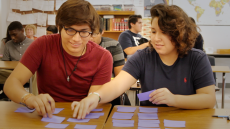 This strategy gives students the opportunity to work with vocabulary, terms, and concepts. Students sort cards with the terms and concepts into categories based on meaning. Sorting the cards gives students a structure to talk meaningfully with one another about content and helps teachers check for understanding.
This strategy gives students the opportunity to work with vocabulary, terms, and concepts. Students sort cards with the terms and concepts into categories based on meaning. Sorting the cards gives students a structure to talk meaningfully with one another about content and helps teachers check for understanding.
Teachers can use a cell phone parking lot to manage student cell phone use during a class period. Implementing this tool allows teachers to interact with students about their cell phones in a proactive and non-confrontational way.
The Classroom Contract serves as a collaboratively created framework for behavior expectations in the classroom. Students and teacher work together to design an agreement for classroom norms, rules and consequences. To achieve ultimate student ownership, contracts should be developed and agreed upon by all class members. The Classroom Contract can…
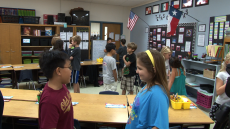 This discussion technique allows learners to actively engage with new content by moving around the classroom, asking and answering questions with multiple members of the class. Afterwards, there is an opportunity for group review and reflection.
This discussion technique allows learners to actively engage with new content by moving around the classroom, asking and answering questions with multiple members of the class. Afterwards, there is an opportunity for group review and reflection.
Concept maps are visual representations students create to connect ideas, concepts, and terms. Students can use them to organize information they already know and to incorporate new learning with this prior knowledge. Concept maps help you see how students understand content.
This survey technique helps students assess needs, attitudes, or knowledge. The teacher poses a question and asks each student to record his or her thoughts on a chart that everyone can see. Once everyone has placed his or her mark on the Consensogram, the teacher and class can analyze the results…
This technique (sometimes called Warm-Up, Do Now or Bell Ringer) gets students working as soon as they enter the classroom, increasing instruction time. Students are given Entry Tickets as they arrive at the door, follow the instructions, and complete the task immediately. Entry Tickets are an effective strategy for monitoring…
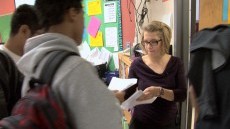 Use this technique to show you what students are thinking and what they have learned at the end of a lesson. Before students leave (for recess, lunch, the end of the day, their next class, or are transitioning to another subject area), they have to hand you a “ticket” filled…
Use this technique to show you what students are thinking and what they have learned at the end of a lesson. Before students leave (for recess, lunch, the end of the day, their next class, or are transitioning to another subject area), they have to hand you a “ticket” filled…
This class-wide motivation tool provides constructive feedback to the entire class and allows opportunities for the class to earn a reward for positive behaviors. A word or phrase is indicated by “blanks” and displayed in the classroom. Each time the class meets a set expectation, they earn a letter or…
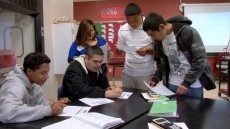 This activity involves learners by asking them to try to find someone in the class who matches a description or knows certain information. It can be used to practice new vocabulary, to activate background knowledge, or to review concepts. You can also use it as a “getting to know you”…
This activity involves learners by asking them to try to find someone in the class who matches a description or knows certain information. It can be used to practice new vocabulary, to activate background knowledge, or to review concepts. You can also use it as a “getting to know you”…
 This technique stimulates student learning through movement and discussion, and it can also be used as a formative assessment. Students are presented with a controversial statement or are asked a question. In each of the four corners of the classroom, an opinion or response is posted. Students express their opinion…
This technique stimulates student learning through movement and discussion, and it can also be used as a formative assessment. Students are presented with a controversial statement or are asked a question. In each of the four corners of the classroom, an opinion or response is posted. Students express their opinion…
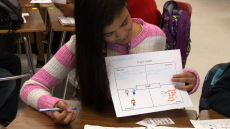 The Frayer Model is a graphic organizer for building student vocabulary. This technique requires students to define target vocabulary and apply their knowledge by generating examples and non-examples, giving characteristics, and/or drawing a picture to illustrate the meaning of the word. This information is placed on a chart that is…
The Frayer Model is a graphic organizer for building student vocabulary. This technique requires students to define target vocabulary and apply their knowledge by generating examples and non-examples, giving characteristics, and/or drawing a picture to illustrate the meaning of the word. This information is placed on a chart that is…
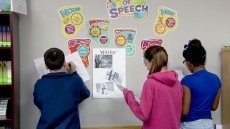 This discussion technique allows students to be actively engaged as they walk throughout the classroom. They work together in small groups to share ideas and respond to meaningful questions, documents, images, problem-solving situations or texts.
This discussion technique allows students to be actively engaged as they walk throughout the classroom. They work together in small groups to share ideas and respond to meaningful questions, documents, images, problem-solving situations or texts.
The purpose of this game is to encourage students to learn basic math facts. The game boosts the use of mental math in all four operations and the use of strategies and gamesmanship. Gator is perfect for those last few minutes in the class or for a group of students…
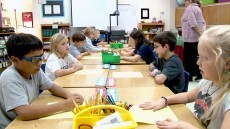 Graphic Organizers are useful educational tools in any subject area. They help students organize their thoughts and ideas for answering questions, function as a pre-writing tool for essays, and provide a visual display of information. They can be an easy way to differentiate instruction for a variety of learning styles…
Graphic Organizers are useful educational tools in any subject area. They help students organize their thoughts and ideas for answering questions, function as a pre-writing tool for essays, and provide a visual display of information. They can be an easy way to differentiate instruction for a variety of learning styles…
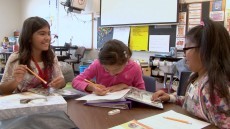 Guided Notes are teacher-prepared handouts that outline lectures, audiovisual presentations, or readings, but leave blank space for students to fill in key concepts, facts, definitions, etc. Guided Notes promote active engagement during lecture or independent reading, provide full and accurate notes for use as a study guide, and help students…
Guided Notes are teacher-prepared handouts that outline lectures, audiovisual presentations, or readings, but leave blank space for students to fill in key concepts, facts, definitions, etc. Guided Notes promote active engagement during lecture or independent reading, provide full and accurate notes for use as a study guide, and help students…
This discussion technique gives students the opportunity to respond to questions and/or discuss information with a variety of peers in a structured manner. Students form two concentric circles and exchange information with a partner until the teacher signals the outer circle to move in one direction, giving each student a…
This cooperative-learning reading technique gives students the opportunity to specialize in one aspect of a topic, master the topic, and teach the material to group members. Asking students to work together in a Jigsaw builds comprehension, encourages cooperation, and improves communication and problem-solving skills.
The KWL Chart starts students thinking about what they Know about a topic, what they Want to know, and what they have Learned in the end. This note-taking device guides students through a three-step process to activate background knowledge, develop a purpose for learning, and summarize.
A log book is a way to record and keep track of events in your classroom. Log books are important classroom management tools that can be used in a variety of ways such as recording tardy students entering the classroom, communication with students’ parents, and student-teacher conferences. Some log books…
 This tool encourages on-task behavior. With the Marble Jar, teachers can frequently and easily reward desired behavior. Each time students exhibit a desired behavior, the teacher places a marble in the jar. Use marbles to support the behaviors that need the most attention. Once the jar is filled, the class…
This tool encourages on-task behavior. With the Marble Jar, teachers can frequently and easily reward desired behavior. Each time students exhibit a desired behavior, the teacher places a marble in the jar. Use marbles to support the behaviors that need the most attention. Once the jar is filled, the class…
If you’re looking for a creative way to partner students, My Other Half makes it easy and fun.
This compelling behavioral reward system delivers a special mystery reward for desired behaviors. In
order
to
gain
access
to
the reward, students
must
engage
in or refrain
from
predetermined academic
or
social
behaviors. On days when the class meets its behavior goal, one student gets to color in that day on…
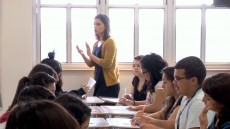 Non-verbal signals may be used as a form of communication between teacher and students. Students can communicate a need, such as using the restroom, without verbally asking or interrupting the discussion. Signals allow the teacher to immediately know what the student needs, rather than stopping to respond to a general…
Non-verbal signals may be used as a form of communication between teacher and students. Students can communicate a need, such as using the restroom, without verbally asking or interrupting the discussion. Signals allow the teacher to immediately know what the student needs, rather than stopping to respond to a general…
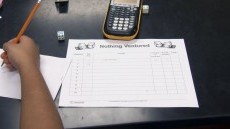 This interactive review game awards points for correctly answered questions. The questions are created by the teacher and can be adjusted to fit any class or subject. By turning the review into a competition, students are engaged and interested in participating.
This interactive review game awards points for correctly answered questions. The questions are created by the teacher and can be adjusted to fit any class or subject. By turning the review into a competition, students are engaged and interested in participating.
 This note-taking technique gives students the opportunity to write down the key points that they remember after five to ten minutes of input from an oral or written source. Asking students to write down the information that they learned not only solidifies new content, it also provides real-time feedback on…
This note-taking technique gives students the opportunity to write down the key points that they remember after five to ten minutes of input from an oral or written source. Asking students to write down the information that they learned not only solidifies new content, it also provides real-time feedback on…
This strategy allows students to discuss responses with a group before sharing them with the class, giving students both confidence in their answers and a way to correct any misconceptions. Students expand their own understanding by seeing their peers’ responses. As a teacher, it allows you to assess students’ comprehension…
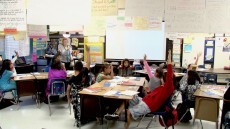 This strategy encourages students to form a concise summary of what they just learned. Students are able to demonstrate their understanding of an idea or concept by writing only one sentence to capture the most important elements. This strategy allows students to practice their writing skills and gives teachers a…
This strategy encourages students to form a concise summary of what they just learned. Students are able to demonstrate their understanding of an idea or concept by writing only one sentence to capture the most important elements. This strategy allows students to practice their writing skills and gives teachers a…
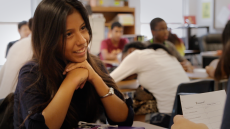 This educational strategy is used to review vocabulary and key concepts and deepen students’ understanding. It helps students make connections to learning in a unit. Password is not only a challenge for students, but allows them to have fun while learning!
This educational strategy is used to review vocabulary and key concepts and deepen students’ understanding. It helps students make connections to learning in a unit. Password is not only a challenge for students, but allows them to have fun while learning!
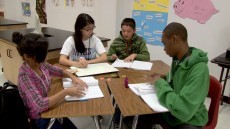 This educational game allows students to convey the meaning of a term or concept through pictures. Having students draw their representation of a word allows for deeper understanding of the meaning of the word.
This educational game allows students to convey the meaning of a term or concept through pictures. Having students draw their representation of a word allows for deeper understanding of the meaning of the word.
 This discussion technique ensures that all students have an equal opportunity to participate and share their responses in class. The randomness of drawing a student’s name using the Popsicle Sticks method also helps with classroom management.
This discussion technique ensures that all students have an equal opportunity to participate and share their responses in class. The randomness of drawing a student’s name using the Popsicle Sticks method also helps with classroom management.
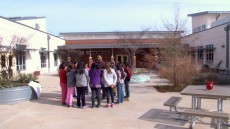 This cooperative-learning technique has students review information with other students by asking and answering questions. Working with peers in a nonthreatening manner builds confidence, encourages greater participation, and results in more thoughtful discussions.
This cooperative-learning technique has students review information with other students by asking and answering questions. Working with peers in a nonthreatening manner builds confidence, encourages greater participation, and results in more thoughtful discussions.
This discussion technique encourages meaningful classroom conversations by eliciting differing opinions and interpretations of text. Asking students to think about their reading stimulates reflection and helps to develop active and thoughtful readers. Save the Last Word for Me also prompts classroom interaction and cooperative group discussion.
This technique gives students the opportunity to respond in the form of a complete sentence to effectively communicate. Sentence stems provide scaffolding to help students get started in speaking or writing without the added pressure of thinking about how to correctly formulate a response.
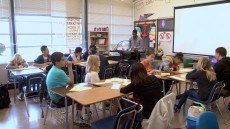 This processing activity gives students the opportunity to respond to questions in writing. Asking students to think and write about what they are learning promotes retention and comprehension. These quick checks for understanding help students make sense of what they are learning before moving on in the lesson.
This processing activity gives students the opportunity to respond to questions in writing. Asking students to think and write about what they are learning promotes retention and comprehension. These quick checks for understanding help students make sense of what they are learning before moving on in the lesson.
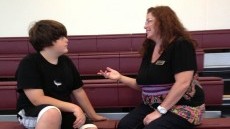 Conferencing with a student provides an opportunity for the teacher to have a private conversation with the student concerning behavior, academic performance, or any other concern the teacher may have. Conferences can be informal, where the teacher may quickly ask a student to step into the hallway and have a…
Conferencing with a student provides an opportunity for the teacher to have a private conversation with the student concerning behavior, academic performance, or any other concern the teacher may have. Conferences can be informal, where the teacher may quickly ask a student to step into the hallway and have a…
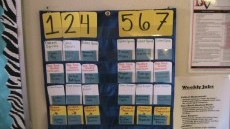 Assigning Student Leaders in the classroom fosters ownership, community, and cohesiveness among class members. Student Leaders apply for a specific responsibility within the room and are assigned their role on a rotating schedule. When students feel more involved in the daily operations of the classroom, they begin to positively manage…
Assigning Student Leaders in the classroom fosters ownership, community, and cohesiveness among class members. Student Leaders apply for a specific responsibility within the room and are assigned their role on a rotating schedule. When students feel more involved in the daily operations of the classroom, they begin to positively manage…
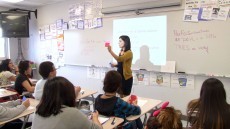 This strategy is meant to keep students actively engaged while you perform a quick and easy check for understanding. At any point in the lesson, you can pose a question to your students and rather than hearing from just one or two students, you get to see everyone’s answer.
This strategy is meant to keep students actively engaged while you perform a quick and easy check for understanding. At any point in the lesson, you can pose a question to your students and rather than hearing from just one or two students, you get to see everyone’s answer.
Student Responsibility Forms encourage student accountability while giving students the opportunity to explain why they chose not to follow a classroom expectation. Students receive a form when they do not meet a classroom expectation, such as following directions after a teacher request. In addition to increasing personal responsibility, the form…
Study Cards are created by students to synthesize information learned in a lesson. After creating them, students can use them to quiz a classmate or review for an assessment. As a teacher, you can collect and review the Study Cards to assess a student’s understanding of a concept.
This class wide motivation system requires students to work together in groups and allows them to earn rewards for their positive behaviors. It creates competition within the class, which adds motivation for the students. It is easiest to group the students according to their tables or seating arrangements, although grouping…
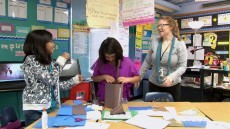 The name of this strategy comes from the term tableau vivant which means “living picture.” In this activity, students create a still picture, without talking, to capture and communicate the meaning of a concept. Students must truly understand the meaning of a concept or idea in order to communicate it…
The name of this strategy comes from the term tableau vivant which means “living picture.” In this activity, students create a still picture, without talking, to capture and communicate the meaning of a concept. Students must truly understand the meaning of a concept or idea in order to communicate it…
Each teacher runs his or her classroom differently, so it is important to decide on the procedures you need to run your classroom smoothly and then teach students the procedures of your classroom. Regardless of the age of the students, simply posting the expectations or procedures on the wall is…
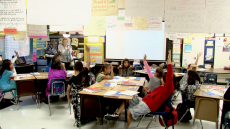 In order to promote a positive, caring atmosphere in the classroom, devote a portion of class for “Tell Me Something Good.” This exercise takes just a couple of minutes from a class period, but has long-lasting effects and sets an optimistic tone for working together. During this time, students can…
In order to promote a positive, caring atmosphere in the classroom, devote a portion of class for “Tell Me Something Good.” This exercise takes just a couple of minutes from a class period, but has long-lasting effects and sets an optimistic tone for working together. During this time, students can…
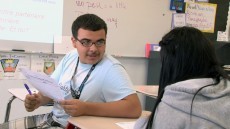 This discussion technique gives students the opportunity to respond to questions in written form before engaging in meaningful conversation with other students. Asking students to write and discuss ideas with a partner before sharing with the larger group builds confidence, encourages greater participation, and results in more thoughtful discussions.
This discussion technique gives students the opportunity to respond to questions in written form before engaging in meaningful conversation with other students. Asking students to write and discuss ideas with a partner before sharing with the larger group builds confidence, encourages greater participation, and results in more thoughtful discussions.
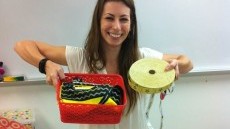 This motivation system is used to reward individual students. Students earn tickets for targeted behaviors or for completing predetermined tasks. Then, at given intervals, the teacher has a raffle drawing with the collected tickets and students whose names are drawn may choose a reward. Tickets can be purchased or made…
This motivation system is used to reward individual students. Students earn tickets for targeted behaviors or for completing predetermined tasks. Then, at given intervals, the teacher has a raffle drawing with the collected tickets and students whose names are drawn may choose a reward. Tickets can be purchased or made…
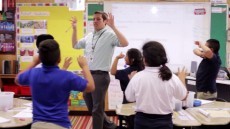 Total Physical Response (TPR) is a method of teaching language or vocabulary concepts by using physical movement to react to verbal input. The process mimics the way that infants learn their first language, and it reduces student inhibitions and lowers stress. The purpose of TPR is to create a brain…
Total Physical Response (TPR) is a method of teaching language or vocabulary concepts by using physical movement to react to verbal input. The process mimics the way that infants learn their first language, and it reduces student inhibitions and lowers stress. The purpose of TPR is to create a brain…
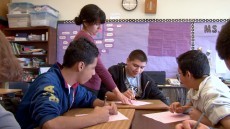 This strategy encourages students to reflect on their learning and process information presented in the lesson. Similar to other closing strategies, it asks students to pick out important pieces of information and to question anything they don’t completely understand. As a teacher, it is a tool that will be used…
This strategy encourages students to reflect on their learning and process information presented in the lesson. Similar to other closing strategies, it asks students to pick out important pieces of information and to question anything they don’t completely understand. As a teacher, it is a tool that will be used…
This strategy permits all students to participate in discussion, rather than only a few students participating in a class-wide discussion. All students are able to process new learning while engaging in meaningful conversation with a classmate.
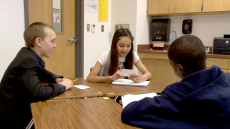 This collaborative strategy gets students moving around the room while working with classmates to solve problems and answer questions. This also allows all students the opportunity to “be the teacher,” which students love to do. As students talk about their ideas and thinking process with others, it helps them develop…
This collaborative strategy gets students moving around the room while working with classmates to solve problems and answer questions. This also allows all students the opportunity to “be the teacher,” which students love to do. As students talk about their ideas and thinking process with others, it helps them develop…
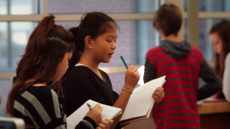 This partner strategy allows students to work together to solve a problem or respond to a question. Students walk around the room while having a structured talk with a partner, providing an opportunity to move and process their learning.
This partner strategy allows students to work together to solve a problem or respond to a question. Students walk around the room while having a structured talk with a partner, providing an opportunity to move and process their learning.
This strategy actively engages students and encourages participation by all. Students write down responses to a question or prompt given to them by the teacher and quickly share their responses with the class. Students have to pay attention and listen closely to their classmates’ responses to compare them to their…